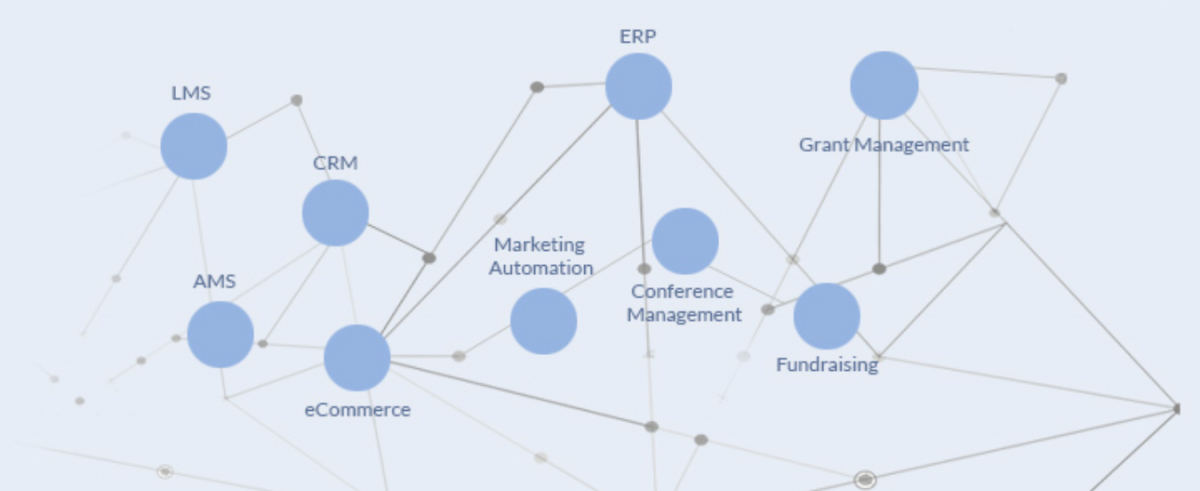
Guest post by Mani Jagadeesan, ShuffleExchange
Overall, the significance of integrations increase is due to the number of Software as a Service (SaaS) applications that have emerged across industries. The SaaS market is projected to be a $278 billion market by 2021 according to Gartner. There are thousands of these purpose-built, lightweight applications that are in the market. Companies are procuring these platforms at a rampant pace. Hence, when there are so many data management platforms, integration is critical to make these applications well connected to produce a meaningful outcome for the enterprises.
Integration is a huge topic, particularly in the Association world. The association and nonprofit industries have acquired more and more of these SaaS applications. The vendor-managed, purpose-built relatively inexpensive pieces of software is a natural fit for associations. With that, the associations embarked on the data decentralization trend. As you may recall, ten to fifteen years back, the data centralization used to be the main theme as any and every piece of data had to come to a single enterprise system which is the Association Management Software (AMS). But I believe associations are leaning more toward more lightweight best-of-breed applications. The AMS platform, of course, will continue to exist but will play a different role in the ecosystem in the future. Again, if there are so many applications in the play, the integration becomes a basic necessity.
In terms of popular integration points, the event technology industry operates a little differently in the Association space. Most of the companies not only offer the software, but they also offer onsite services. This is a significant advantage for associations; however, users want to bring the registrant data back to their AMS for data analytics and reporting purposes.
The Learning Management System (LMS) platforms have picked up enormous momentum so those integrations are becoming more important. Client Relationship Management (CRM) applications can never replace the AMS which has the depth and breadth of offerings. Still, they can coexist with AMS for member management and services purposes. So, there are several integration points there. There are, of course, many others, but these are the most common that we see.
There are significant changes in the systems integration industry that have become disruptive. There are few new tools like the integration platform as a service or iPaaS solutions in the market to reduce the time it takes to build integrations. Then, there is a significant amount of methodological changes as these applications are fairly lightweight because they are purpose-built. The Application Program Interfaces, or APIs, are evolving and the new Application Service Providers (ASPs) have bought into the idea of API first development.
All the same, there are real challenges to integration projects. Most of the challenges commonly revolve around project governance. For example, the requirements are not usually well defined. The term “connector” is deceptive and confusing. When you ask a vendor, “Do you have a connector for a particular application?” they will say, “YES!”
But this doesn’t mean all your integration requirements will be tackled by the connector offered by the vendor. If you are building an integration between an AMS and a CRM application, typically these are enterprise-grade applications with several modules and several hundred APIs. Any integration developed between these applications using a cookie-cutter approach is invariably not going to meet all your requirements.
That being said, there are some best practices for integration projects. Start with following a process and define the requirements clearly with as many details as you can. We have seen some customers spending extensive amounts of time to do data mapping upfront. It is needed, but precise mapping can be done at a later point. If a systems integration company like us is involved, you can take our help as we know the data fields for several platforms. Your job is to define the data exchange requirements and identify the system of truth, particularly if you are doing a two-way sync. Also, it is crucial to define the triggering events clearly so don’t overlook that key process function.
A lot of discussion has been about middleware. When you talk about middleware, typically home-grown, it doesn’t carry essential integration features. Features like a scalable infrastructure, message queues, error handling, and notification systems are not part of middleware. In addition, it is a time-consuming process to build integrations and the standards are hard to maintain over time.
An iPaaS has all of these components built-in and offers visual designer tools to build integrations which significantly reduces time. In trying to avoid the term "connector" here, an iPaaS does offer the possibility for some community-built integrations to be repurposed.
ShuffleExchange's iPaaS is different from others in the market. In addition to all of the standard components of iPaaS, ShuffleExchange brings decades of association and nonprofit subject matter expertise (SME). The SME component is crucial. If vendors don’t understand this industry well, it is hard to develop meaningful and useful solutions.
Want more information?
Join ReviewMyAMS and ShuffleLabs on Tuesday, June 9th, 2020 from 2:00 PM to 3:00 PM EDT for a free and informative webinar Connectors Redefined: Integrations Done Right. As SaaS applications continue to grow, the term "connector" is frequently used, but often misunderstood. We'll identify and discuss some of the basics, challenges, and best practices. Register here today!
